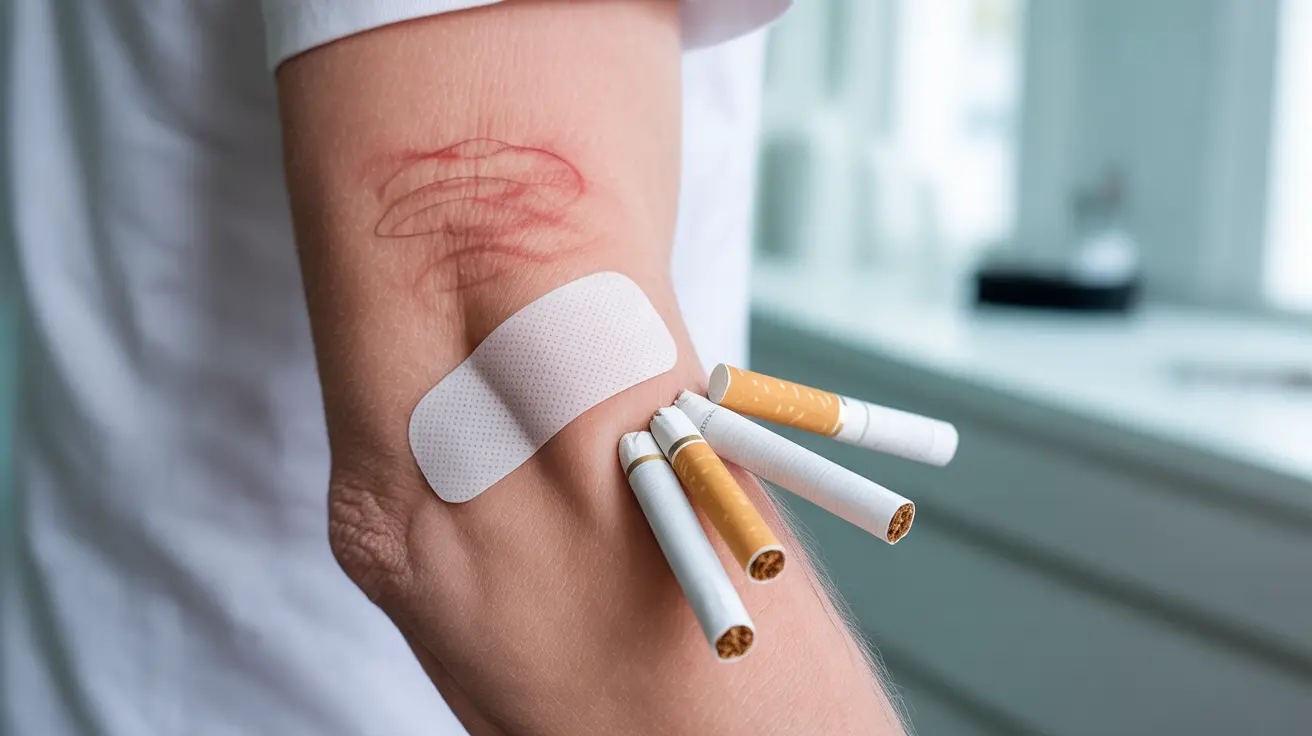Quitting smoking is one of the most challenging journeys many people face, and nicotine replacement therapy (NRT) patches have become a popular tool to help manage withdrawal symptoms. However, many individuals using nicotine patches experience moments of weakness where they consider smoking while wearing the patch or wonder if removing it temporarily makes smoking safer.
Understanding the interactions between nicotine patches and cigarettes is crucial for both your safety and the success of your quit attempt. This comprehensive guide explores the risks, alternatives, and best practices when dealing with smoking urges during nicotine patch therapy.
Understanding Nicotine Patches and How They Work
Nicotine patches are transdermal delivery systems designed to provide a steady, controlled release of nicotine through your skin. Unlike cigarettes that deliver nicotine rapidly to your brain, patches maintain consistent nicotine levels throughout the day, helping to reduce cravings and withdrawal symptoms.
The patch works by delivering predetermined amounts of nicotine—typically ranging from 7mg to 21mg over 16 to 24 hours, depending on the specific product. This steady delivery helps your body adjust gradually to lower nicotine levels, making the quitting process more manageable than going cold turkey.
When you smoke while wearing a patch, you're essentially doubling your nicotine intake. The patch continues delivering its steady dose while cigarettes provide an additional surge of nicotine, creating potentially dangerous levels in your system.
The Risks of Removing Your Patch to Smoke
Many people believe that removing their nicotine patch before smoking eliminates safety risks, but this approach creates several problems. First, nicotine from patches can remain active in your system for hours after removal, meaning you're still at risk of nicotine overload even after taking the patch off.
Additionally, the act of removing and reapplying patches can reduce their effectiveness. The adhesive may not stick as well after removal, potentially causing the patch to fall off or deliver inconsistent nicotine levels. This inconsistency can trigger stronger cravings and make your quit attempt more difficult.
Frequent patch removal also establishes a behavioral pattern that undermines the psychological benefits of NRT. Instead of learning to manage cravings without cigarettes, you're reinforcing the habit of smoking when stress or urges arise.
Nicotine Poisoning: Symptoms and Serious Health Risks
Combining cigarettes with nicotine patches significantly increases your risk of nicotine poisoning, a potentially serious medical condition. Nicotine poisoning occurs when your body receives more nicotine than it can process effectively, leading to toxic levels in your bloodstream.
Early symptoms of nicotine poisoning include nausea, vomiting, dizziness, headaches, and increased heart rate. You may also experience sweating, confusion, and difficulty concentrating. These symptoms can appear within minutes to hours after consuming excess nicotine.
More severe cases can lead to dangerous complications including irregular heart rhythms, seizures, difficulty breathing, and in extreme cases, coma. People with underlying heart conditions, high blood pressure, or other cardiovascular issues face particularly high risks when combining nicotine sources.
The risk is especially pronounced because patches deliver nicotine for extended periods, while cigarettes provide immediate, concentrated doses. This combination can push nicotine levels well beyond safe thresholds.
Impact on Your Quit Attempt Success
Smoking while using nicotine patches significantly undermines your chances of successfully quitting tobacco. Research shows that people who smoke while using NRT have substantially lower quit rates compared to those who use patches as directed.
The psychological impact is equally damaging. Each time you smoke while wearing a patch, you reinforce neural pathways associated with smoking behavior. This makes it harder to break the mental and emotional connections to cigarettes that are essential for long-term success.
Furthermore, smoking during patch therapy can create a false sense of security. You might convince yourself that occasional cigarettes won't hurt your progress, leading to more frequent lapses and eventual return to regular smoking.
Safe Strategies When Experiencing Strong Cravings
When intense urges to smoke arise while wearing your patch, several safe strategies can help you manage these moments without compromising your health or quit attempt. First, remember that cravings are temporary—most intense urges last only 3-5 minutes.
Try the "4 Ds" approach: Delay (wait 10 minutes), Deep breathe (practice breathing exercises), Drink water (stay hydrated), and Do something else (engage in a distracting activity). Physical movement, such as taking a walk or doing jumping jacks, can be particularly effective at redirecting your focus.
Consider contacting your healthcare provider about adjusting your patch strength if cravings are overwhelming. Sometimes a higher-dose patch or combination NRT (patches plus gum or lozenges) may be more appropriate for your nicotine dependence level.
When to Seek Medical Help
If you've smoked while wearing a nicotine patch and experience symptoms like severe nausea, chest pain, irregular heartbeat, difficulty breathing, or confusion, seek immediate medical attention. These could indicate nicotine poisoning requiring professional treatment.
Also consult your healthcare provider if you find yourself frequently tempted to smoke while using patches. They can help adjust your treatment plan, recommend additional support resources, or suggest alternative quit methods that might work better for your specific situation.
Alternative Approaches and Support Resources
If nicotine patches alone aren't providing sufficient craving control, several alternatives and complementary approaches can help. Combination NRT, using patches with short-acting products like gum or lozenges, can address breakthrough cravings more effectively.
Prescription medications like varenicline (Chantix) or bupropion (Zyban) work differently than NRT and might be more suitable for some individuals. Behavioral support, whether through counseling, support groups, or smartphone apps, significantly improves quit success rates when combined with any pharmacological treatment.
Frequently Asked Questions
Can I smoke a cigarette while wearing a nicotine patch without harming my quit attempt?
No, smoking while wearing a nicotine patch is not safe and significantly harms your quit attempt. It increases your risk of nicotine poisoning and reinforces smoking behaviors, making it much harder to quit successfully. The combination provides dangerous levels of nicotine and undermines the psychological benefits of using NRT as directed.
What are the risks and symptoms of nicotine poisoning if I smoke while using a nicotine patch?
Nicotine poisoning from combining patches with cigarettes can cause nausea, vomiting, dizziness, headaches, rapid heart rate, sweating, and confusion. Severe cases may lead to irregular heart rhythms, seizures, breathing difficulties, or coma. People with heart conditions face particularly high risks. If you experience these symptoms, seek immediate medical attention.
Is it safer to remove the nicotine patch before smoking?
No, removing the patch before smoking is not a safe solution. Nicotine from patches remains active in your system for hours after removal, so you're still at risk of nicotine overload. Additionally, frequent patch removal reduces effectiveness, weakens adhesion, and establishes harmful behavioral patterns that undermine your quit attempt.
How does smoking with the nicotine patch affect my chances of successfully quitting?
Smoking while using nicotine patches dramatically reduces your chances of successfully quitting. It reinforces smoking behaviors, strengthens addiction pathways in your brain, and creates a false sense of security about occasional cigarettes. Research shows significantly lower quit rates among people who smoke while using NRT compared to those who follow directions properly.
What should I do if I accidentally smoke a cigarette while wearing a nicotine patch?
If you accidentally smoke while wearing a patch, don't panic but monitor yourself for nicotine poisoning symptoms like nausea, dizziness, or rapid heartbeat. Drink water, rest, and seek medical attention if symptoms are severe. Don't remove the patch unless directed by a healthcare provider. Use this as a learning experience to develop better coping strategies for future cravings, and consider contacting your quit-smoking counselor or healthcare provider for additional support.




